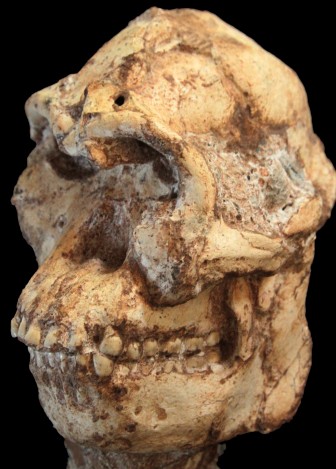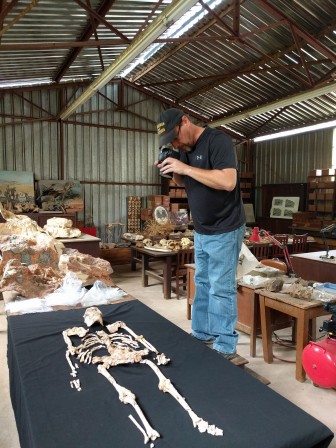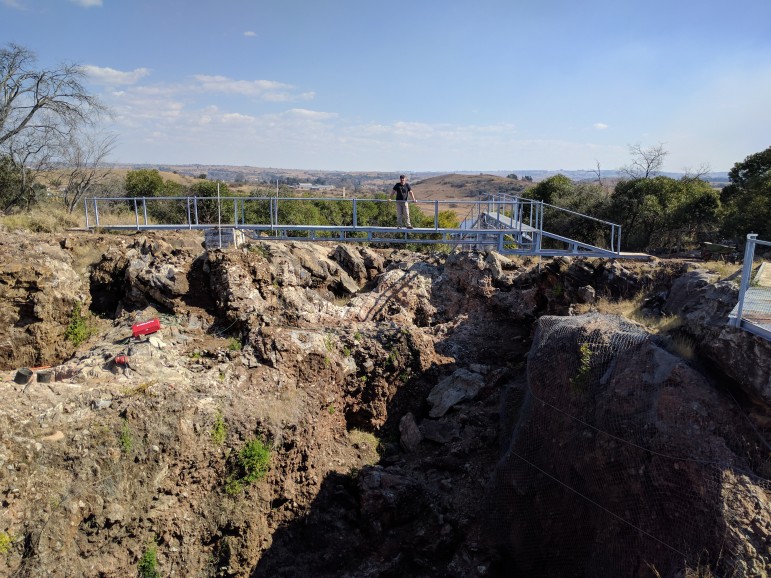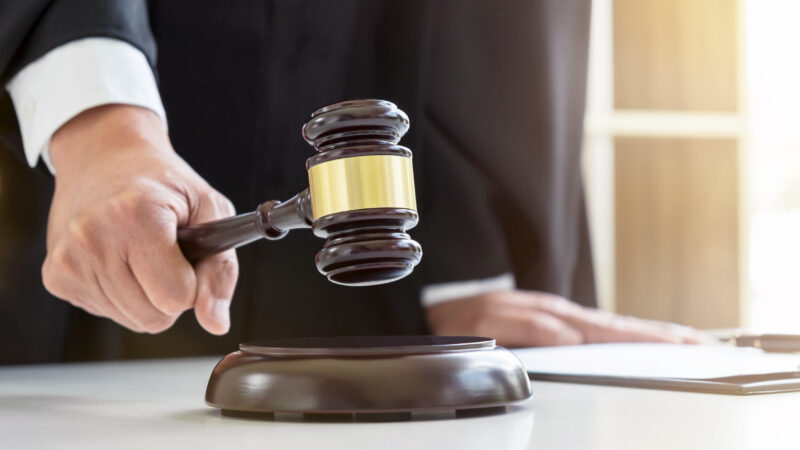“Astonishing” Find Could Be New Pre-Human Species
Last month, scientists in South Africa revealed “Little Foot,” a three-million-year-old pre-human skeleton that could tell us a lot about ourselves. A Birmingham-Southern College scientist is helping to analyze this potential new species, but before we tell you about the present, let’s take you back … a little.
It’s the 1920s. Miners are blasting away in huge caves near Johannesburg. Shattered rocks litter the scene. Some have fossils in them, but the miners don’t care.
Now jump to the 1990s. A researcher named Ron Clarke finds some of those remains in boxes at a university. There were tiny foot bones – that’s where the name “Little Foot” comes from – and a tibia, or a shin bone. People had thought they were from cows, but Clarke saw otherwise.
“He noticed on a tibia that it was broken at the very top – it was a fresh break,” says Birmingham-Southern College anthropologist Jason Heaton. “He asked two of our fossil preparators if they would go and find – in this gigantic, underground, dark cave – a cross-section of that bone. And so they took handheld lamps, and within two days, they found the cross-section, and they were able to find out exactly where Little Foot’s skeleton was.”
Battling some very stubborn rock, Clarke and his team eventually dug out one of the oldest and most complete hominid skeletons ever found. They’ve dated Little Foot at about 3.67 million years – at least as old as the famous “Lucy” skeleton from east Africa. And Little Foot is almost 90 percent whole, compared to Lucy’s 40 percent.
“The reason Little Foot is going to be so dramatically important to what we do is the fact that it’s so complete,” says Heaton, “because when you look at early human prehistory, we only have 10 or 11 partial skeletons.”
That’s because smaller, more delicate bones usually don’t last millions of years, even when they haven’t been chewed up by carnivores. So comparatively, Little Foot is in great shape. And the team thinks it might be a new species. They’re calling it Australopithecus prometheus.
“They’re more ape than human, but they are filling in that gap of a missing link,” Heaton says. “Its anatomy is right between us and chimpanzees. It’ll start filling in how some of these species are related to each other.”
Ian Tattersall, a curator emeritus of anthropology at the American Museum of Natural History, is not involved with the find but agrees it’s a major puzzle-piece:
“I would not be in the least surprised if it were a new species,” he says.
After two decades of digging and reconstruction, Little Foot is now in a university vault in South Africa. But thanks to CAT scans and 3-D printing, the analysis continues on several continents, including in Jason Heaton’s lab at Birmingham-Southern. He says he can’t give away too much, but the Little Foot team plans to publish two dozen papers starting this year.
Ian Tattersall says he looks forward to detailed descriptions of Little Foot. And looking back, he’s thankful Ron Clarke happened to find those boxes.
“It is one of the most astonishing stories of discovery ever, in the walls of this gigantic, dark, difficult cave,” says Tattersall. “And it just goes to show how important it is not to think that old stuff is unimportant.”
This particular old stuff will likely boost understanding of our ancestors and of other hominid species that didn’t survive to the present day.
Heaton hopes he and his colleagues can help spread that understanding. In general, researchers have become more willing to share their data publicly.
“They’ve taken 3-D models and made them available on the web, and I’ve seen where people are printing them out for schools,” says Heaton. “This is a skeleton that belongs to all of us – it’s important enough that people should learn about it.”
All because some South African miners blasted a cave almost hundred years ago.
Former U.S. Sen. Doug Jones announces run for Alabama governor
Jones announced his campaign Monday afternoon, hours after filing campaign paperwork with the Secretary of State's Office. His gubernatorial bid could set up a rematch with U.S. Sen. Tommy Tuberville, the Republican who defeated Jones in 2020 and is now running for governor.
Scorching Saturdays: The rising heat threat inside football stadiums
Excessive heat and more frequent medical incidents in Southern college football stadiums could be a warning sign for universities across the country.
The Gulf States Newsroom is hiring an Audio Editor
The Gulf States Newsroom is hiring an Audio Editor to join our award-winning team covering important regional stories across Mississippi, Alabama and Louisiana.
Judge orders new Alabama Senate map after ruling found racial gerrymandering
U.S. District Judge Anna Manasco, appointed by President Donald Trump during his first term, issued the ruling Monday putting a new court-selected map in place for the 2026 and 2030 elections.
Construction on Meta’s largest data center brings 600% crash spike, chaos to rural Louisiana
An investigation from the Gulf States Newsroom found that trucks contracted to work at the Meta facility are causing delays and dangerous roads in Holly Ridge.
Bessemer City Council approves rezoning for a massive data center, dividing a community
After the Bessemer City Council voted 5-2 to rezone nearly 700 acres of agricultural land for the “hyperscale” server farm, a dissenting council member said city officials who signed non-disclosure agreements weren’t being transparent with citizens.











